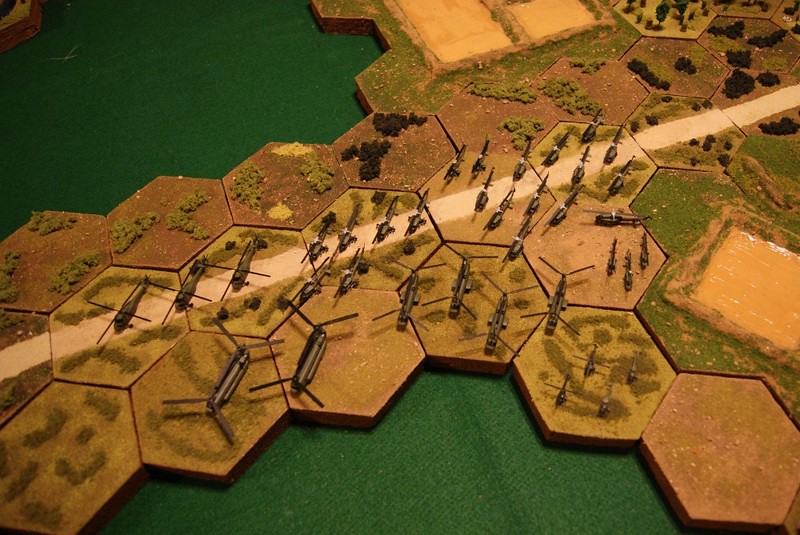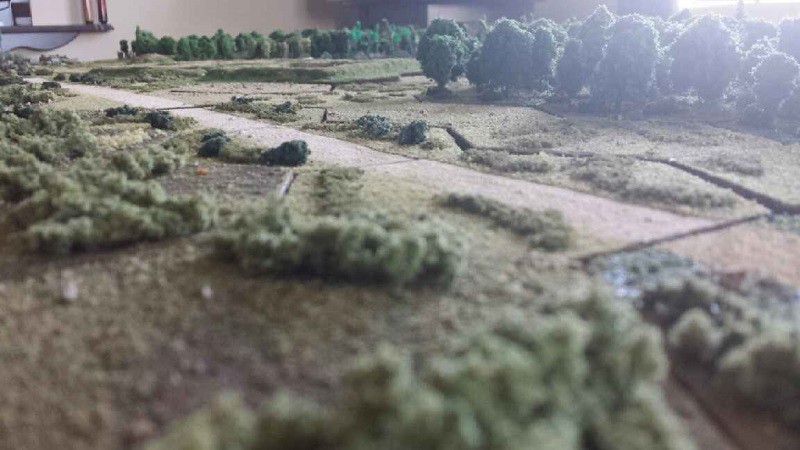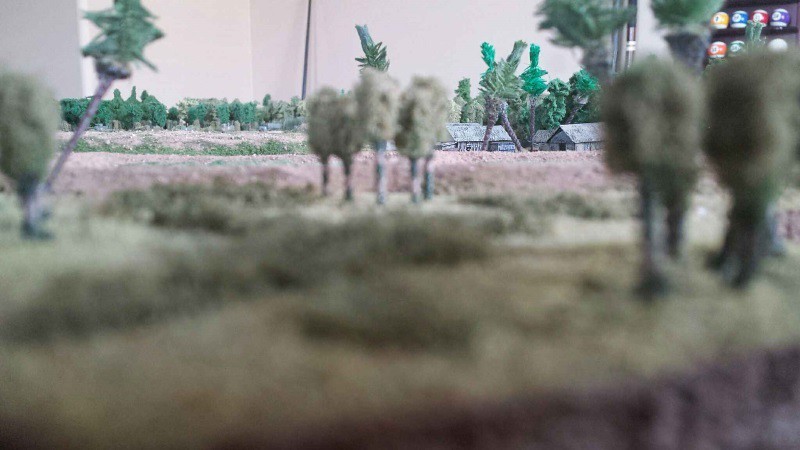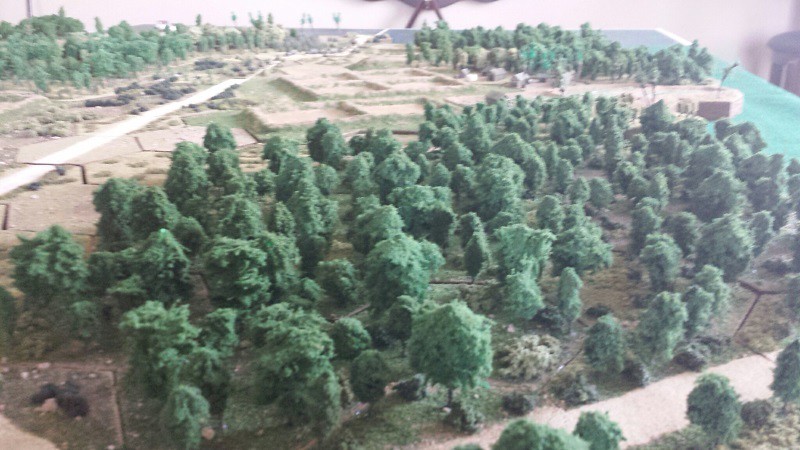
A close up of a vill… Trying to simulate an animal pen and a water well along with some various boxes/crates…



Another vill with the same items:

OH-6 Loach snooping around…






To cross the open area or not to…


First attempt at a rubber tree plantation:





 Charlie don't surf!
Charlie don't surf!











